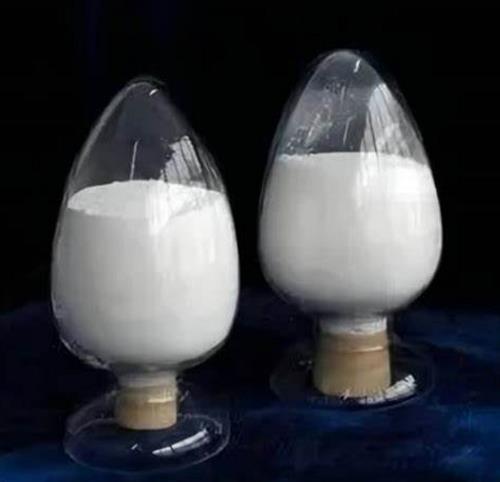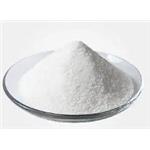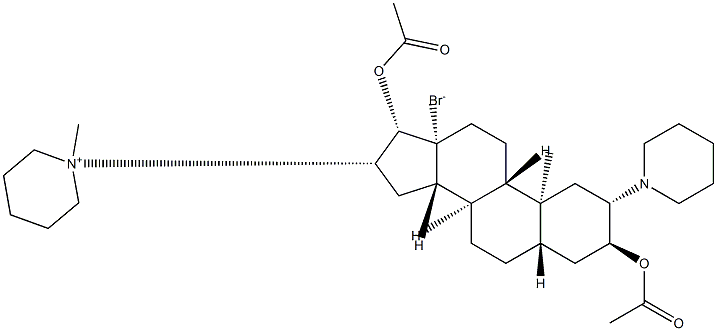Vecuronium Bromide: Insights into Its Role in Surgery, Hemodynamic Effects, and Elimination Kinetics
Vecuronium bromide is used to relax the muscles. It works by blocking the signals between your nerves and your muscles. Vecuronium is given before general anesthesia in preparing you for surgery. Vecuronium helps to keep your body still during surgery. It also relaxes your throat so a breathing tube can be more easily inserted before the surgery. Vecuronium bromide may also be used for purposes not listed in this medication guide.

Intraoperative hemodynamics with vecuronium bromide
Among the nondepolarizing muscle relaxants, Vecuronium bromide and atracurium were presented as an attractive alternative to succinylcholine. However, neither of these agents had the onset time as short as needed for endotracheal intubation. Clinically acceptable intubating conditions are produced more rapidly and are of better quality, after rocuronium compared with both vecuronium and atracurium. Good-to-excellent intubating conditions after rocuronium 0.6 mg/kg can be obtained within 30–60 s in young children. In India, rheumatic heart disease is still common and in these patients, multiple valvular lesions are encountered. It is conceivable that rocuronium (an analogue of vecuronium) with mild vagolytic action leading to small increase in heart rate, similar duration of action to Vecuronium bromide, a favorable recovery pattern, and noncumulative property may be beneficial in most cardiac lesions. However, these hemodynamic effects have mostly been described in patients undergoing coronary artery bypass graft surgery, and there is limited literature regarding its use in patients undergoing valve surgery in conjunction with morphine as the opioid. Vecuronium bromide and rocuronium decrease the heart rate and should be preferred in patient with faster baseline heart rate. In terms of intubating conditions rocuronium and vecuronium provide best conditions, but onset is faster with rocuronium.[1]
Dale discovered the role of acetylcholine in neuromuscular transmission and gave new insights in the structure activity relationship of muscle relaxants and the basic differentiation of two classes of muscle relaxants-the depolarizers and nondepolarizers. Succinylcholine reliably produces muscle relaxation within 60 s of its administration. The introduction of rocuronium bromide, ORG-9426, a nondepolarizing agent with a quick onset and intermediate duration of action, has one-sixth of potency of vecuronium bromide and is extremely cardio stable and has a rapid onset of action, which would render it the muscle relaxant of choice for facilitation of both routine and crash intubation. Taking these aspects into consideration, the present study was undertaken to evaluate and compare the hemodynamic changes between vecuronium bromide and rocuronium. In this study conducted, patients were given rocuronium 0.6 mg/kg in Group A and vecuronium bromide 0.1 mg/kg intravenously in Group B. There were no statistically significant differences in patient's age or sex. (P > 0.05)
In the control group with vecuronium bromide no statistically significant (P > 0.05) change in pulse rate and MAP were observed at 1-min, 5 min, 10 min, 15 min, 20 min, and at the end of surgery compared to preoperative values. Hemodynamic effects of vecuronium was studied by Wierda et al., in 1989 and reported that vecuronium bromide did not influence the heart rate, or systolic, or diastolic arterial blood pressure. In our study too, we found that rocuronium caused mild increase in heart rate while the MAP decreased after the administration of the drug. The results of the present study also showed that vecuronium bromide is associated with good hemodynamic stability and do not cause any significant change in pulse rate or MAP. Therefore, in addition to rocuronium providing good intubation conditions, it exhibits good hemodynamic stability, and has a rapid onset of action with much lesser side-effects when compared to other nondepolarizing muscle relaxants.
Disposition of vecuronium bromide in the cat
The disposition of vecuronium bromide has been investigated in six normal cats (group I) and in six cats with ligated renal pedicles (group II). A combined fluorimetric and chromatographic technique was used to determine the concentrations of vecuronium and its metabolites in biological material. After i.v. injection of 0.6 mg kg-1, vecuronium bromide disappeared rapidly from the plasma of the normal cat. Concentrations decreased bi-exponentially with half-lives of 4.6 and 31 min, respectively. The steady state volume of distribution was 0.23 litre kg-1 and the clearance 11 ml min-1 kg-1. Seventy percent of an i.v. dose of vecuronium (or its metabolites) was recovered: 15% in the urine, 40% in the bile and 15% in the liver. Only 3.8% of this consisted of the 3-hydroxy metabolite. There were no significant differences in pharmacokinetic data or in the amounts of vecuronium and its metabolites recovered in cats with ligated renal pedicles. The 15% of vecuronium normally excreted by the kidney was compensated for by increased hepatic and biliary concentration of vecuronium bromide.[2]
Pharmacokinetics and pharmacodynamics of vecuronium bromide
The pharmacokinetics and pharmacodynamics of vecuronium bromide (25-50 micrograms/kg) and pancuronium (25-50 micrograms/kg) were determined in nine ASA class I or II patients anesthetized with nitrous oxide and halothane. Force of thumb adduction in response to supramaximal stimulation of the ulnar nerve was quantified and recorded. Serum concentrations of the muscle relaxants were determined for eight hours after their administration using a mass spectrometry assay. Data were analyzed by nonlinear regression and fit to a three-compartment pharmacokinetic model and a four-compartment pharmacodynamic model. Vecuronium bromide had a more rapid clearance (5.2 +/- 0.7 ml X kg-1 X min-1; mean +/- SD) and a shorter elimination half-life (71 +/- 20 min) as compared with pancuronium (1.8 +/- 0.4 ml X kg-1 X min-1; 140 +/- 25 min). No other pharmacokinetic differences were found between the drugs. Pharmacodynamic analysis showed that the plasma concentration at steady state which produced a 50% neuromuscular blockade (Cpss 50) was similar for vecuronium bromide and pancuronium. The authors conclude that the drugs are equivalent in their onset and potency; however, the more rapid clearance and shorter elimination half-life for vecuronium bromide provides a kinetic basis for its shorter duration of neuromuscular blockade as compared with pancuronium.[3]
References
[1]Mathew A, Sharma AN, Ganapathi P, Shankaranarayana P, Nazim M, Aiyappa DS. Intraoperative hemodynamics with vecuronium bromide and rocuronium for maintenance under general anesthesia. Anesth Essays Res. 2016 Jan-Apr;10(1):59-64.
[2]Bencini AF, Scaf AH, Agoston S, Houwertjes MC, Kersten UW. Disposition of vecuronium bromide in the cat. Br J Anaesth. 1985 Aug;57(8):782-8.
[3]Cronnelly R, Fisher DM, Miller RD, Gencarelli P, Nguyen-Gruenke L, Castagnoli N Jr. Pharmacokinetics and pharmacodynamics of vecuronium (ORG NC45) and pancuronium in anesthetized humans. Anesthesiology. 1983 May;58(5):405-8.
You may like
Lastest Price from Vecuronium bromide manufacturers

US $100.00/KG2025-04-21
- CAS:
- 50700-72-6
- Min. Order:
- 1KG
- Purity:
- 99%min
- Supply Ability:
- 200TON

US $0.00-0.00/KG2025-04-03
- CAS:
- 50700-72-6
- Min. Order:
- 0.01KG
- Purity:
- 99%, EP10
- Supply Ability:
- 500KG


